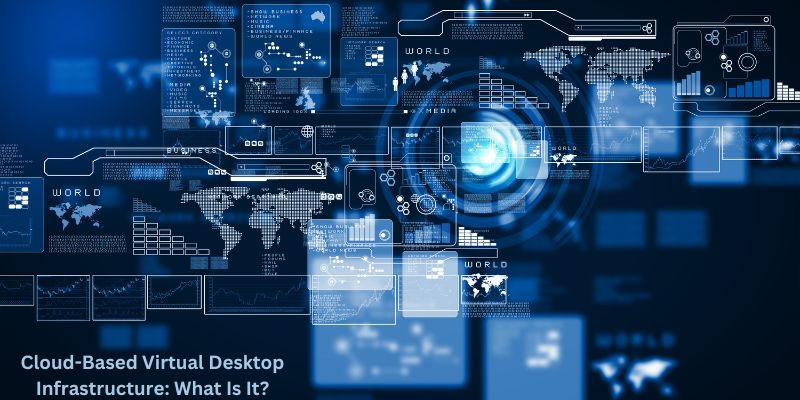Distance Converter
The world of technology is constantly evolving, bringing us new and innovative solutions to improve our productivity and efficiency. One such solution that has gained immense popularity in recent years is cloud-based virtual desktop infrastructure (VDI). By harnessing the power of the cloud, VDI offers a flexible and scalable approach to desktop computing, revolutionizing the way we work and access our digital resources. In this technology blog, acameramen.com will delve into the realm of cloud-based VDI, exploring its benefits, applications, and the impact it has on businesses and individuals alike. So, get ready to step into the virtual world and discover the wonders of cloud-based virtual desktop infrastructure!
1. Cloud-Based Virtual Desktop Infrastructure: What Is It?

Your company no longer needs to provide you with—and manage, maintain, and replace—a physical machine. Instead, you can access enterprise computer systems from almost any device, such as your personal computer, smartphone, or tablet, thanks to virtual desktop infrastructure, also known as just VDI. Through a secure desktop client or browser, authorized users may access the same corporate servers, data, apps, and services from any authorized device.
The industry standard for supporting remote and branch office employees as well as providing access to partners and contractors, VDI enables you to execute typical desktop applications on centralized servers. Users may use their own devices without being concerned about combining personal data with corporate assets thanks to VDI’s assistance in protecting crucial company apps and data (which can be operated from highly secure datacenters).
Virtual desktop infrastructure is one approach to offer virtual desktops and programs to customers, but there are many other types of VDI including desktop as a service (DaaS) and even customized Cloud PCs. These services have gained popularity because to a number of factors, including increased security, performance, centralization, reduced hardware needs, cost savings, and the ability for workers to work remotely.
If you are interested in similar topics, you can also refer to Cloud-Based Project Management Software – 6 Best Options To Maximize Work.
2. Cloud-Based Virtual Desktop Infrastructure: How Does It Work?

VDI setups can be more sophisticated than remote desktop environments since they are supported by big collections of VMs that operate on top of hypervisor software. While the desktop OS is hosted on a centralized server in a real datacenter, VDI leverages server hardware to run other software applications, such as Windows or Linux, on virtual machines (VMs).
Persistent and non-persistent virtual desktops, both with benefits for certain use cases, are commonly offered by cloud providers.
A persistent virtual desktop offers the required permanent environment for users that need enhanced rights, making it an excellent choice for users like developers and IT professionals. Persistent virtual desktops often cost more per user than non-persistent ones since they allow for the most customization and software compatibility.
A non-persistent virtual desktop provides some customizing, but it does so without integrating it with the underlying OS. As a result, any user may log in to any VM and receive a customized experience. However, the customization does not “persist” and is lost when the user logs out. For knowledge and task employees in settings like computer laboratories, contact centers, or retail kiosks, non-persistent desktops provide a reduced cost per user solution.
3. Cloud-Based Virtual Desktop Infrastructure: Why Would Someone Utilize VDI?

More businesses are using VDI as a result of the widespread changes in working habits. Several use scenarios are shown below:
- Enabling distant employment – Because virtual desktops are simpler to deploy and maintain from a single location, more businesses are embracing VDI for remote workers.
- Enabling shift or task-based work: Non-persistent VDI is particularly well suited to the usage cases of organizations like customer service centers and public computer laboratories that have a large number of users who need the same software to carry out certain tasks.
- Fulfilling the needs for compliance and security – The intelligent security features of VDI services, which can proactively detect threats and take corrective action, may help keep apps and data secure and compliant.
- Allowing users to bring their own devices (BYOD) For businesses with BYOD rules, cloud-based virtual desktop technology is a wonderful choice since it enables the use of a wider range of devices and performs processing on a centralized server. Data security is further aided by the fact that data is saved on the server rather than on devices used by clients.
Conclusion
In conclusion, cloud-based virtual desktop infrastructure offers numerous benefits and opportunities for businesses and individuals alike. It provides a flexible and scalable solution for accessing desktop applications and data from anywhere, at any time, using any device. The ability to centralize desktop management, enhance security measures, and reduce hardware costs can greatly streamline operations and improve productivity. Additionally, the cloud-based approach allows for easier updates and maintenance, minimizing downtime and ensuring a seamless user experience. As technology continues to evolve, cloud-based virtual desktop infrastructure will undoubtedly play a crucial role in shaping the future of remote working and digital collaboration.
I hope you found this article about cloud-based virtual desktop infrastructure useful. Have a good day!